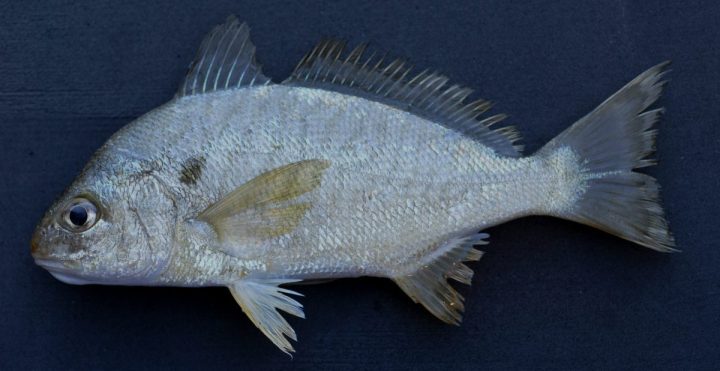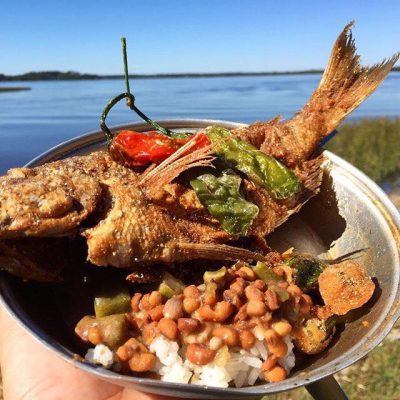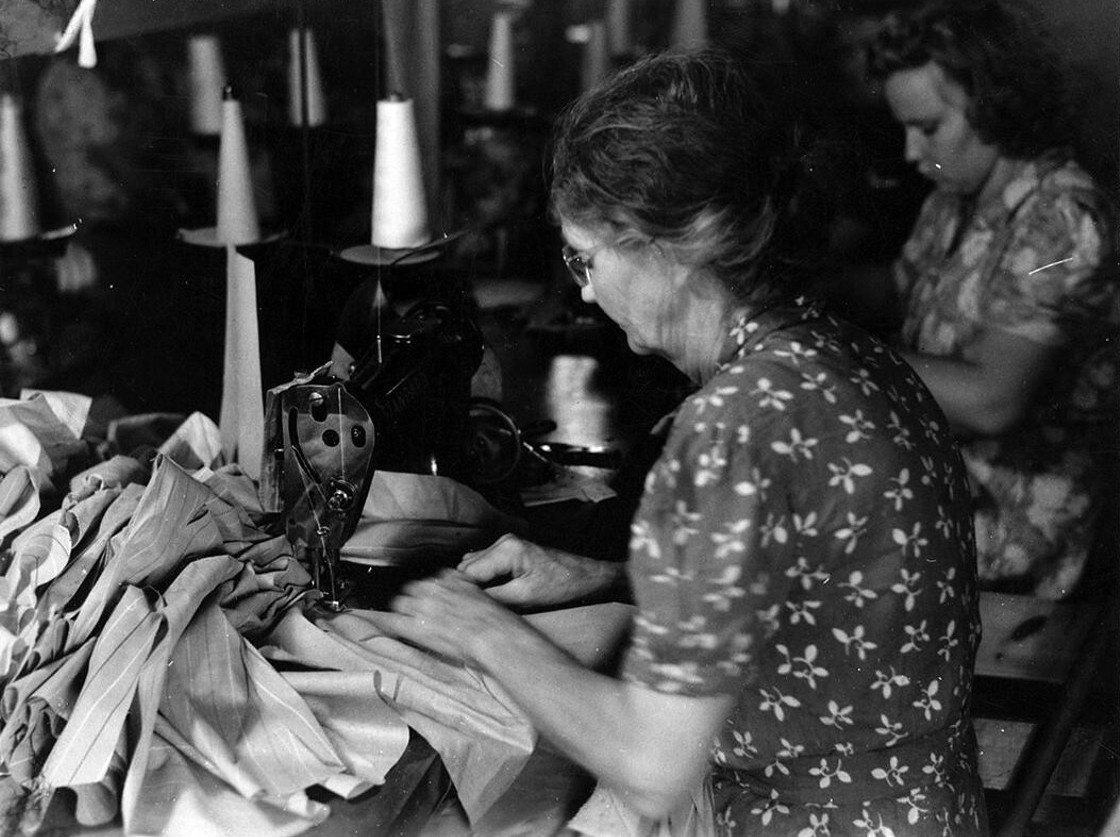
JACKSONVILLE – Fish scales flew around Bright’s Seafood like confetti at a parade for King Neptune. My memory of that afternoon is as clear as the fall day when I witnessed the flurry. Owners Bennie and Glenda Bright hardly had a minute to leave the whizzing electric fish scalers at their Jacksonville market. The news was all over Onslow County.
The spots were running.
Supporter Spotlight
Folks who weren’t waiting in line to buy spots or calling in orders were probably out fishing. Two unofficial “holidays” will coax people away from their jobs on the North Carolina coast: the ACC college basketball tournament and the fall spot fishing season.

Drive along coastal roadways and you’ll know when the fish are running. Small boats crowd around bridges over the brackish waters that spots love. Temporary signs in front of restaurants advertise “We have spots.” Banners go up in Hampstead to announce the North Carolina Spot Festival, held every September since 1963.
At Bright’s Seafood market that day, Bennie was preparing to fry 300 pounds of spots for a politician’s campaign rally while Glenda wondered where a fish scale might pop up next. “I find them in church sometimes. I really do,” she said, giggling. “You know, like one stuck to me.”
I could relate. I’ve scaled, headed and gutted probably hundreds of spots my family and I netted or caught using fishing poles. If the spots were running after school, Mom ran us up to one of Topsail Island’s piers to catch our share.
Anglers prefer double-drop rigs that dangle two hooks between a sinker. You need them both. When spots are schooling, from as soon as late August to sometime in November, it’s not unusual to catch the fish two at a time.
Supporter Spotlight
Like Bennie, my family dressed enough spots one year to stock a fish-fry fundraiser. Ours was for my brother’s Boy Scout troop. On weekends, as soon as we pulled into the driveway after New River fishing trips, neighbors jammed our patio looking to buy spots or nab an invite to my dad’s backyard fish fry.
Spots are fried whole. The half- to 1-pound fish, 5 to 7 inches long, are too small to filet. They’re in the same family as croakers, but as Bennie told me, “A spot has got a different flavor all to itself.” Croakers are tender with a mild, sweet flavor. Spots are denser and lean. Their light meat tastes of the sea. “It’s a better fish to me,” Bennie said.
The large spot behind the spot’s gills gave the fish its name. Legend claims the mark was made by the fingers of St. Peter, the fisherman whose bad luck on the Sea of Galilee was turned around, according to the Bible, when Jesus advised “Let down your nets.”
Abundant, easy-to-catch spots must have seemed a miracle to people who lived along the South’s remote coastlines in the days before supermarkets and places like Bright’s Seafood. Much of their diet depended on hunting, fishing, foraging and what they could grow in their gardens. Salted spots, boiled and served with sweet potatoes, is an old-fashioned North Carolina recipe some people still remember.
At my house, we packed our dressed spots in cardboard milk cartons, filled the cartons with water, pushed in the lid and stacked the cartons in a big chest freezer. The water preserved the fish’s texture. The fish tasted so fresh every once a week or so throughout winter when Mom or Dad would, as coastal Carolinians say, “fry up a mess of spots.” No matter if we had them often, spots were always a special treat, and not just because they tasted good. For the hour that we were gathered around the dinner table, our minds were on the river and the next time the spots would be running.

Tips For Perfect Fried Spots
- At the market: Ask for fish to be simply headed and gutted or get spots butterflied with their bones intact. Plan on two fish per person.
- Preparations: Rinse and dry spots. Cut three vertical gashes across the thickest part of both sides of whole fish so that they cook quickly and evenly. Salt the fish inside and out. “The only time you want to put pepper on a fish is if he’s been in the freezer. It kills the freezer taste,” Onslow County fisherman Bennie Bright said.
- Breading: A quick roll in unseasoned yellow cornmeal is all the fish need. Bread the fish inside and out and then immediately drop them into the fryer. Wait too long to fry breaded fish and the coating will be soggy.
- Frying: Choose a high smoke-point oil such as canola, grapeseed, safflower or peanut oil. Pour oil to a depth of 2 inches in a heavy skillet, preferably cast iron. Heat the oil to 350 degrees before adding fish. Use a deep-fry thermometer to help know when to adjust the heat.
- When is it done? Don’t trust the old saying that fried fish is cooked when it floats to the oil’s surface. The fish should cook about three minutes per side or until the flesh easily flakes from the bone. Serve the fish with simple sides like boiled potatoes or coleslaw. You don’t want anything to overpower the fish’s flavor. Some restaurants offer fried spot for breakfast, over plain grits and a fried egg on the side.
Front page featured photo: Baxter Miller







